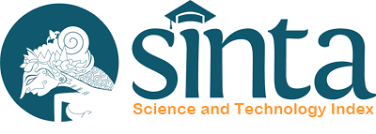Pelatihan Menulis Paragraf Deskriptif Memanfaatkan Artificial Intelligence (AI) Bagi Siswa SMKN 1 Jember
Abstract
This service aims to increase students' knowledge and skills in writing descriptive paragraphs by using AI in the learning process. The implementation of the service involved 30 students in English lessons by combining several methods, namely lecture, demonstration, simulation, and discussion methods including preparation, implementation, and evaluation stages. The descriptive paragraph writing results of the students before and after the training on the use of Quillbot were evaluated, and with the use of Quillbot, their writing showed improvement in expressing ideas and developing paragraphs logically and systematically, quality in grammatical aspects, and more structured. Questionnaires filled out by participants during the implementation of the activity showed that many students had not utilized Artificial Intelligence so far in any case, especially related to learning activities. Through this training, students have the ability and knowledge from experience in using AI in writing descriptive paragraphs.
Downloads
References
Ajay, Rani, S., Sarita, M., & Bhatia, S. (2023). AI/ML revolutionizing social media and business: A comprehensive study. 252–279. https://doi.org/10.1201/9781003329947-12
Alam, T. G., Antony, A. L. N., Hotama, K. V, & Kuswandi, S. S. (2019). Revolusi Industri Keempat Akhir dari Buruh di Seluruh Dunia. Jurnal Hubungan Internasional, 12(2), 229–244. https://doi.org/10.20473/jhi.v12i2.13311
Carvalho, L., Martinez-Maldonado, R., Tsai, Y. S., Markauskaite, L., & De Laat, M. (2022). How can we design for learning in an AI world? Computers and Education: Artificial Intelligence, 3, 100053. https://doi.org/10.1016/J.CAEAI.2022.100053
Choi, R. Y., Coyner, A. S., Kalpathy-cramer, J., Chiang, M. F., & Campbell, J. P. (2020). Introduction to Machine Learning, Neural Networks, and Deep Learning. Translational Vision Science & Technology, 9(2), 1–12. https://doi.org/10.1167/tvst.9.2.14
Gustian, A. (2009). Ciri Tulisan Narasi Deskripsi Eksposisi dan Argumentasi. https://adegustiann.blogsome.com/2009/02/02/ciri-tulisannarasi-deskripsi-eksposisi-dan-argumentasi/. [Diakses tanggal 3 Januari 2024]
Hwang, W.-Y., Nurtantyana, R., Purba, S. W. D., Hariyanti, U., Indrihapsari, Y., & Surjono, H. D. (2023). AI and recognition technologies to facilitate English as foreign language writing for supporting personalization and contextualization in authentic contexts. Journal of Educational Computing Research, 61(5), 1008–1035. https://doi.org/10.1177/07356331221137253
Kaplan, A., & Haenlein, M. (2019). Siri, Siri, in my hand: Who’s the fairest in the land? On the interpretations, illustrations, and implications of artificial intelligence. Business Horizons, 62(1), 15–25. https://doi.org/10.1016/j.bushor.2018.08.004
Marzuki, , Widiati, U., Rusdin, D., Darwin, , & Indrawati, I. (2023). The impact of AI writing tools on the content and organization of students’ writing: EFL teachers’ perspective. Cogent Education, 10(2), 2236469. https://doi.org/10.1080/2331186X.2023.2236469
Nazari, N., Shabbir, M. S., & Setiawan, R. (2021). Application of artificial intelligence powered digital writing assistant in higher education: randomized controlled trial. Heliyon, 7(5), e07014. https://doi.org/10.1016/J.HELIYON.2021.E07014
Nisa’, Rofiatun. (2022). Pelatihan Membuat Sitasi Karya Ilmiah Mahasiswa Menggunakan Aplikasi Mendeley. Taawun, 2(02), 170-179. https://doi.org/10.37850/taawun.v2i02.324
Rifky, S., Putra, J. M., Ahmad, A. T., Widayanthi, D. G. C., Abdullah, G., Sunardi, S., & Syathroh, I. L. (2024). Pendidikan Yang Menginspirasi: Mengasah Potensi Individu. Yayasan Literasi Sains Indonesia.
Ruegg, R. (2015). The relative effects of peer and teacher feedback on improvement in EFL students’ writing ability. Linguistics and Education, 29, 73–82. https://doi.org/https://doi.org/10.1016/j.linged.2014.12.001
Sasmito, G. W., Apriliani, D., & Nishom, M. (2021). Studi Pengenalan Teknologi Artificial Intelligence Bagi Guru dan Siswa SMK Nurul Islam Larangan. JATI EMAS (Jurnal Aplikasi Teknik Dan Pengabdian Masyarakat), 6(1), 1-6. https://doi.org/10.36339/je.v6i1.508
Susanto, J. C. (2018). Keterampilan Berbahasa Membaca - Menulis - Berbicara untuk Mata Kuliah Dasar Umum Bahasa Indonesia. Jakarta: DEPDIKBUD.
Tjahyanti, L. P. A. S., Saputra, P. S., & Gitakarma, M. S. (2022). Peran Artificial Intelligence (AI) untuk Mendukung Pembelajaran di Masa Pandemi Covid-19. Jurnal Komputer Dan Teknologi Sains (KOMTEKS), 1(1), 15–21.
Wiyanto, Asul. 2004. Terampil Menulis Paragraf. Jakarta: Gramedia Widiasarana Indonesia.
Yahya, M., Hidayat, & Wahyudi. (2023). Implementasi Artificial Intelligence (AI) di Bidang Pendidikan Kejuruan Pada Era Revolusi Industri 4.0. Prosiding Seminar Nasional Dies Natalis Ke-62, 190–199.


.png)

.png)




.png)
.png)


